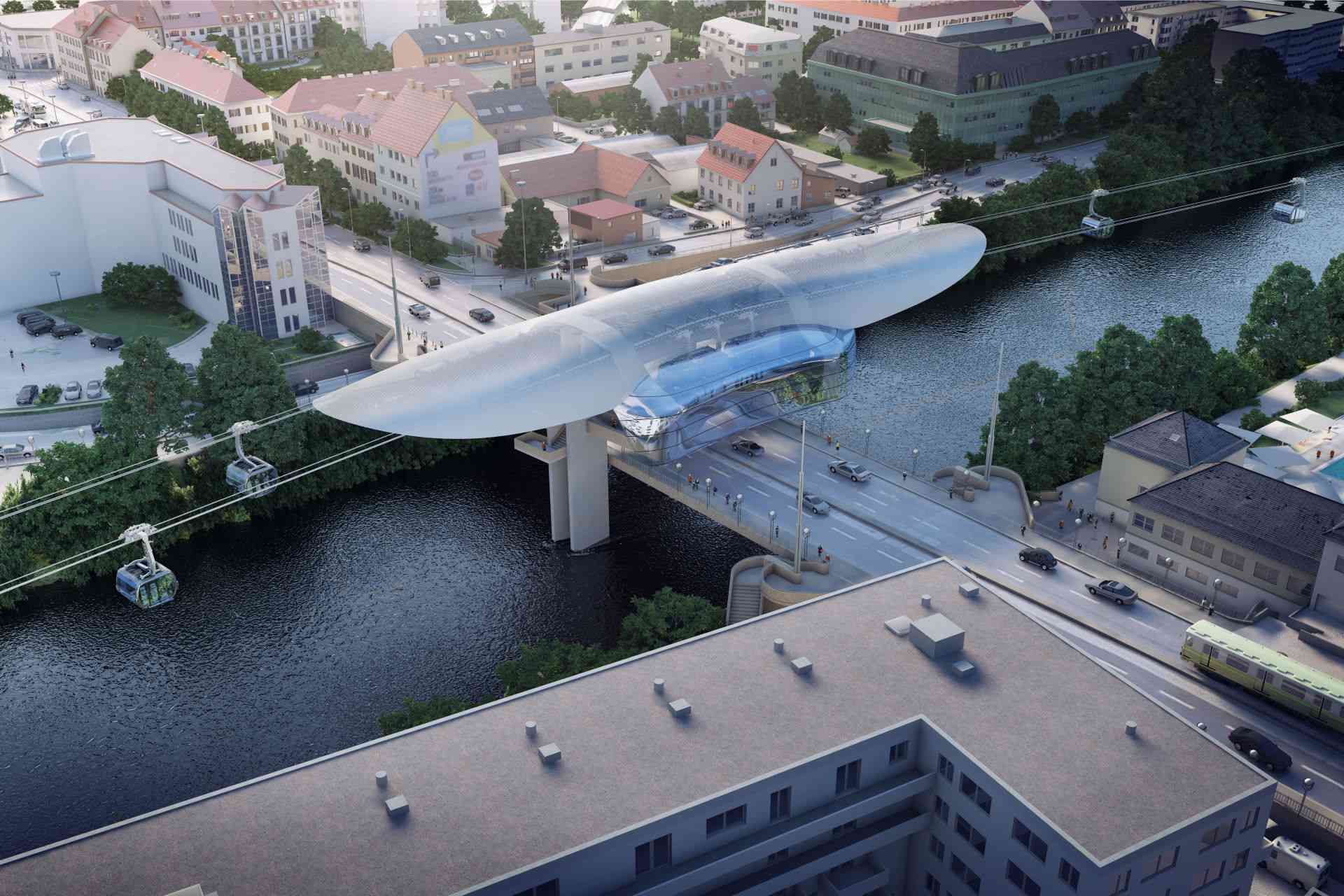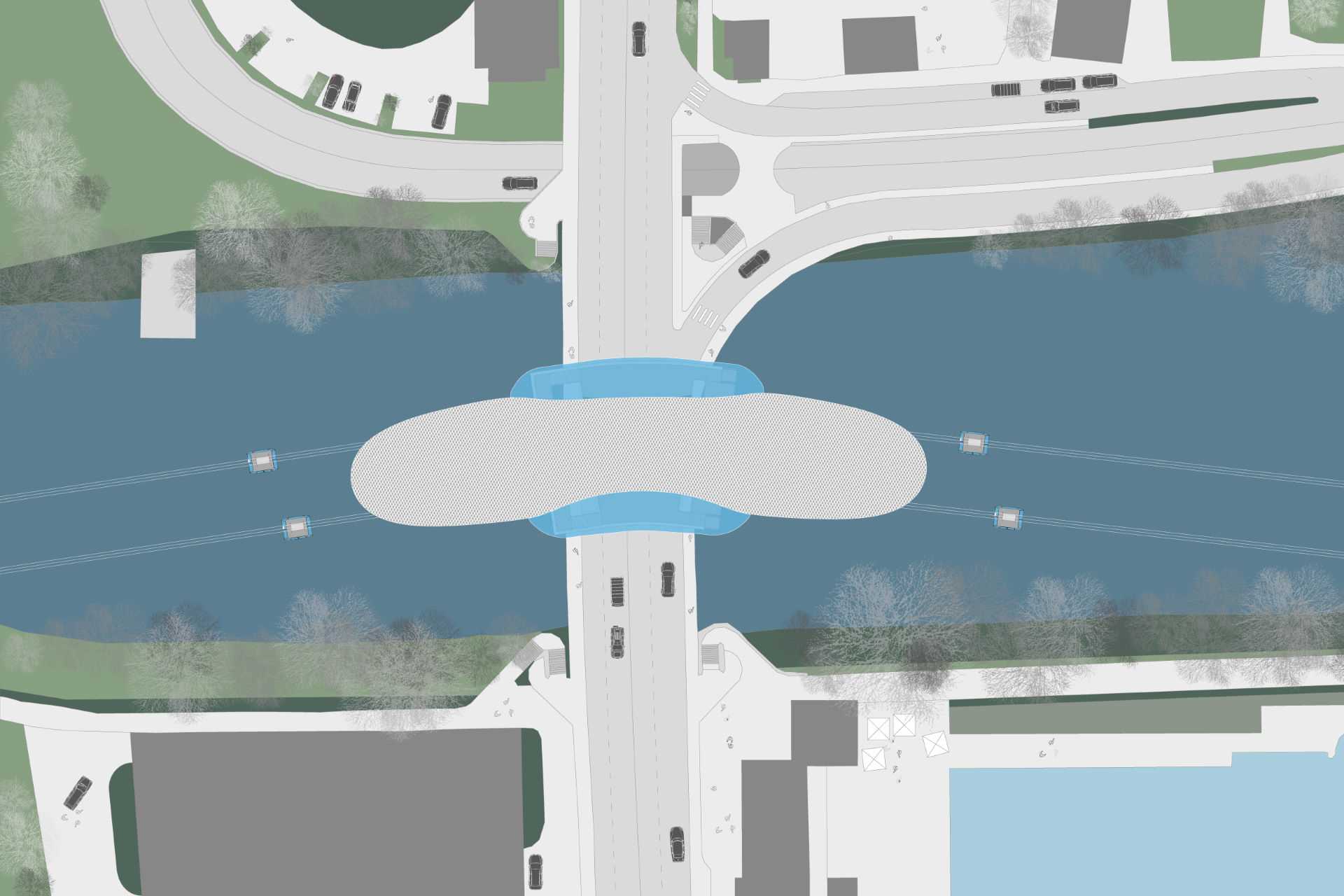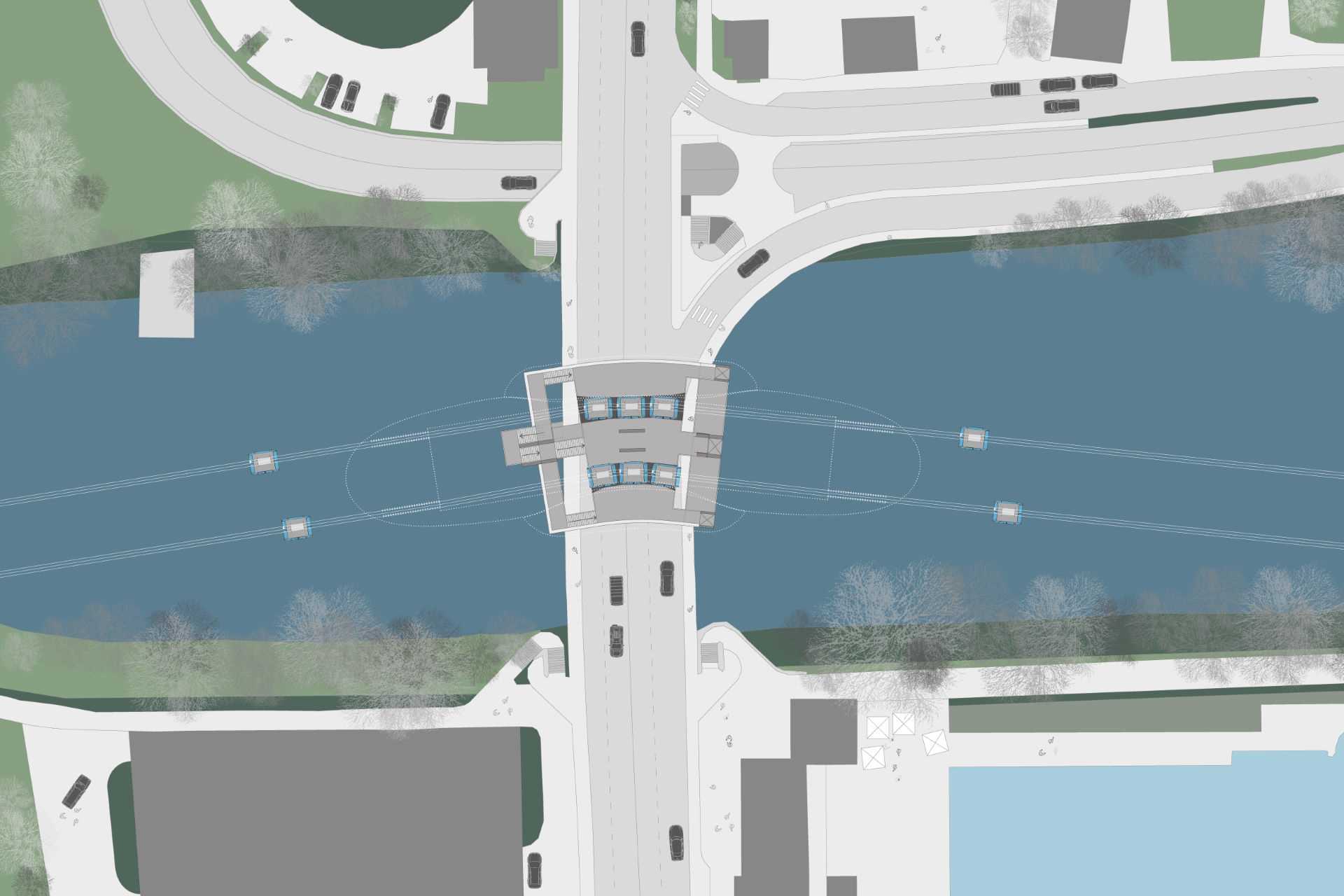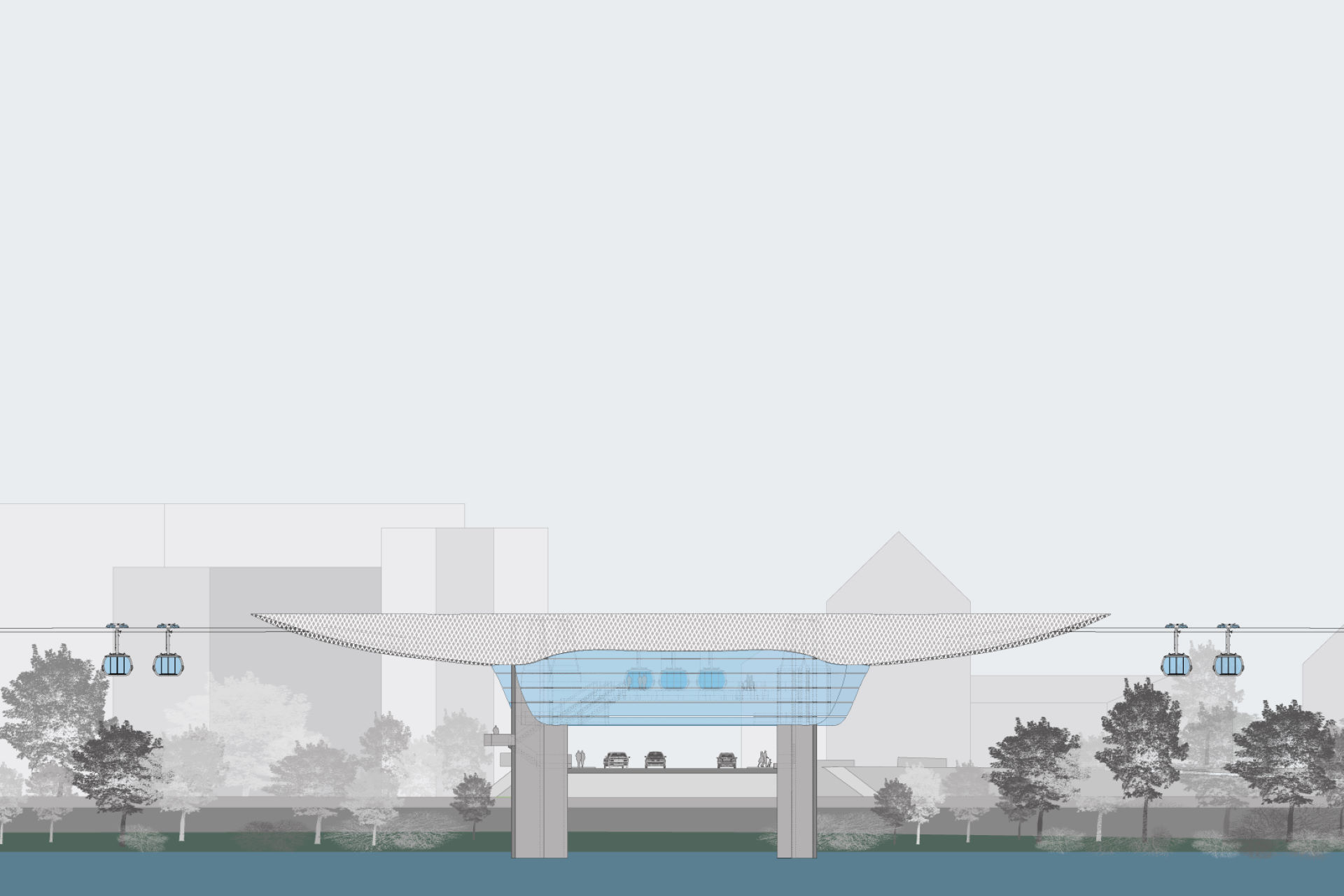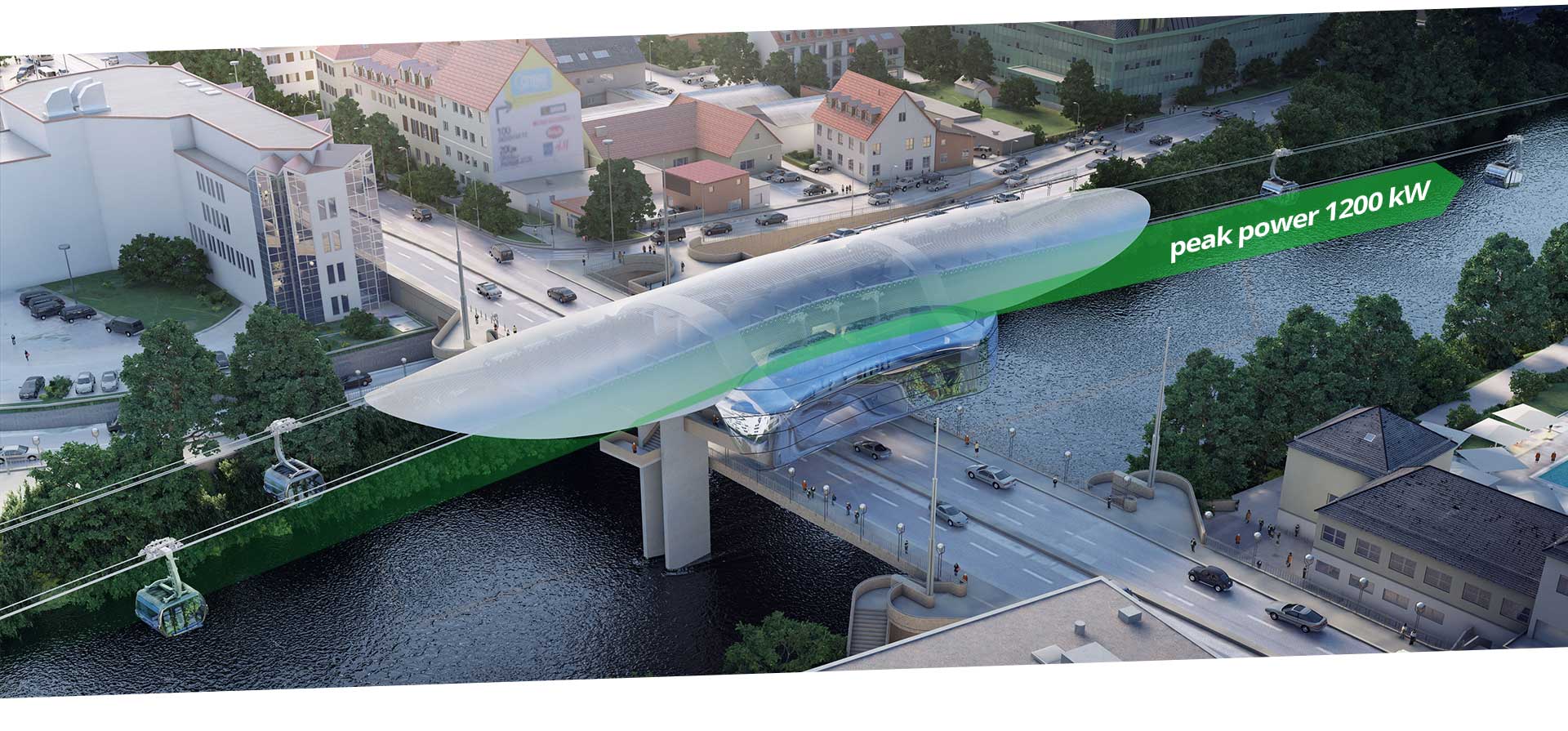
Mur-River Gondola Graz | Feasibility Study, Planning
Holding Graz Kommunale Dienstleistungen GmbH
Austria
2012 – 2020
Tri-cable Gondola Detachable (TGD)
Project Description
An important question in the transport policy in Graz is: How can commuters and day tourists be caught at the outskirts of the city of Graz and brought to the city center by using public passenger transport to reduce the motorized individual traffic in the city?
At peak commuter times, the main roads to and from the city center are congested and parking spaces are scarce. In addition, Graz has one of the highest levels of fine dust pollution in Austria due to its basin location. Due to the existing infrastructure bottlenecks, the expansion of the tram network is difficult or associated with enormous costs and long construction times. Therefore, the city council considers the introduction of a second transportation level. A metro installation is difficult to finance for a city with the size of Graz. Therefore, only the airspace remains.
The exploration phase has shown that a gondola, that runs over the Mur river which divides the city in east and west, could bring an enormous relief for the city from commuter traffic. From a technical and operational point of view only a Tri-cable Gondola Detachable (TGD) system makes sense for a Mur-river gondola running from the south to the north of the city. The Tri-cable Gondola Detachable (2 suspension ropes, 1 haul rope) system combines the advantages of circulating ropeways (with continuous conveyors) and aerial tramways (large cabins). Wherever it is necessary to overcome barriers such as existing structural infrastructures, rivers, lakes, hillsides, etc. with only a few support structures, their cost/benefit ratio is unbeatable.
The proposed urban ropeway would be a Tri-cable Gondola Detachable (TGD) system with a total length of about 9 km, a capacity of 3,000 pphpd and 8 stations.
Although the planned Mur-river gondola would mainly fly over public land, the cityscape protection and UNESCO World Heritage Site in the area of the city center and the long travel times of the gondola rather speak against the use of a ropeway solution.
Service description
The following work was part of the feasibility study and system planning:
- Traffic forecast incl. passenger capacity calculation
- Track alignment and determination of station locations and towers
- Property demand analysis
- System calculation & design and definition of system parameters
- Static rope line calculation
- Layout plan and longitudinal profile
- Station planning and drive equipment design
- Conceptual tower design incl. clearance profile
- Cabin design and drawings
- Architectural designs (renderings)
- Codes & Standards and legal analysis
- Critical points for construction permit
- Preliminary project schedule
- Estimation of investment and operating costs
- Life cycle costs analysis
- Strategy for integration into the public transport network
- Development of ticket fare models
- Development of business model incl. Public Private Partnership (PPP) financing models
- Economical profitability calculations using the Net Present Value (NPV) method and Return On Equity (ROE)
- Execution of a SWOT analysis and cost benefit analysis
- Definition of project USPs and indirect profitability
- Tender preparation for architectural design of the stations
